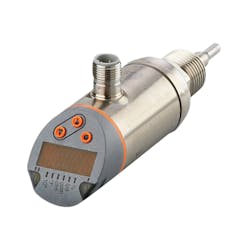Monitor water quality and equipment conditions with sensors for water treatment
A remote monitoring system is a cost-effective way for water and wastewater facilities to receive early warning of water quality issues and equipment malfunctions. Sensaphone offers sensors that measure pH conductivity, oxidation-reduction potential (ORP), toroidal conductivity, flow rate and vibration. These sensors provide accurate measurements and continue to operate in conditions that often cause conventional sensors and probes to fail.
The sensors are compatible with most Sensaphone monitoring devices, which provide the necessary alerting and data logging functionality. When a sensor detects a reading outside of the programmed high or low limit, the user will receive instant notification. The sensors are ideal for applications ranging from pure water in cooling systems to harsh chemical environments in wastewater treatment plants.
How it works
The pH sensor measures changes that can reduce water quality and damage equipment. It is an integral two-wire 4-20 mA pH transmitter that feeds data directly to the remote monitoring device. The sensor includes a measuring range of 0 to 14 pH, a replaceable salt bridge for extended service life, flow-thru, hot-tap or submersible mounting, and automatic temperature compensation.
The ORP sensor measures water cleanliness by detecting contaminants. A lower ORP level means there is a greater level of water impurities consuming the oxygen. The ORP sensor is an integral two-wire 4-20 mA ORP transmitter that feeds data directly to the remote monitoring device. The sensor includes a measuring range of 0 to 1000 mV or -500 to 500 mV, a replaceable salt bridge for extended service life, flow-thru, hot-tap or submersible mounting, and automatic temperature compensation.
The toroidal conductivity sensor measures water purity based on ion counts. It monitors chemically aggressive process solutions in applications where conventional contacting sensors may become fouled or corroded. It is loop-powered and provides direct 4-20 mA output. Each sensor comes standard with a Pt100 RTD temperature device, which provides automatic temperature compensation to 25ºC (77ºF). The sensor is equipped with 1.5 inch MNPT threads on both ends so that it can be mounted for in-flow applications or submersion mounted in tanks or open vessels.
The thermal flow meter with digital display measures and provides real-time flow rates to the monitoring device. When the flow rate falls outside of the programmed high or low limit, the user receives an alert that displays or reads the current flow rate. The sensor can be used to detect and measure the flow of oil, water, glycol and air in internal pipe diameters up to 10 inches.
The vibration sensor can be permanently mounted on water facility equipment like pumps, motors and generators to continuously monitor vibration velocity and detect unusual conditions. The sensor provides constant real-time data to the device, which sends an immediate alert to designated personnel when vibration levels fall out of range.
For more information, go to www.sensaphone.com.
